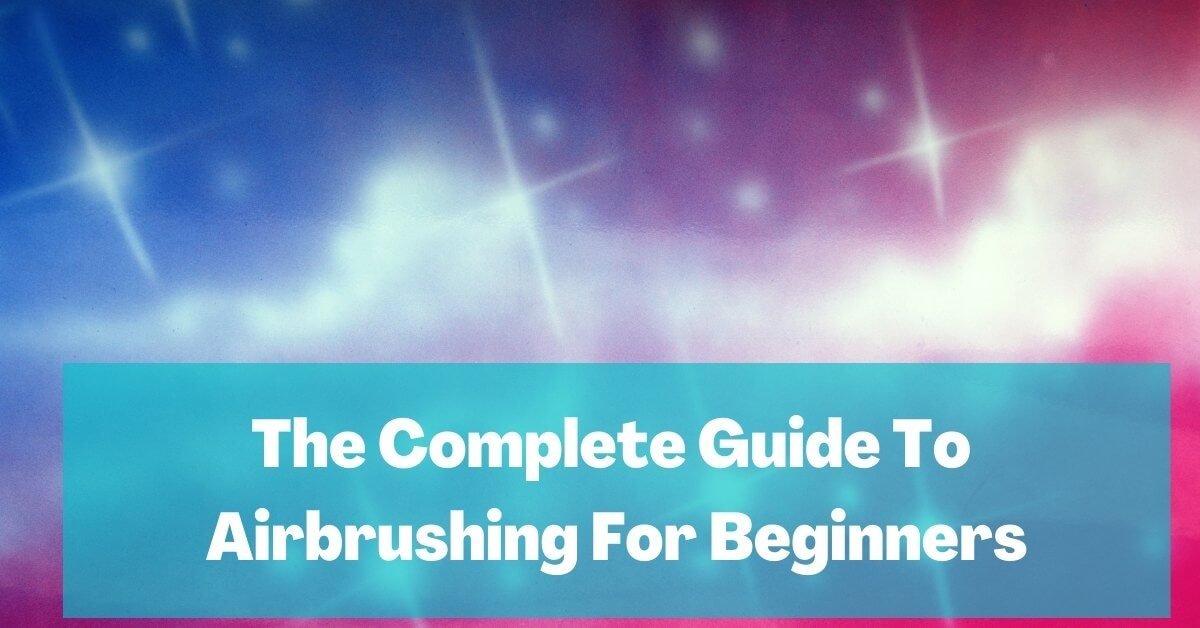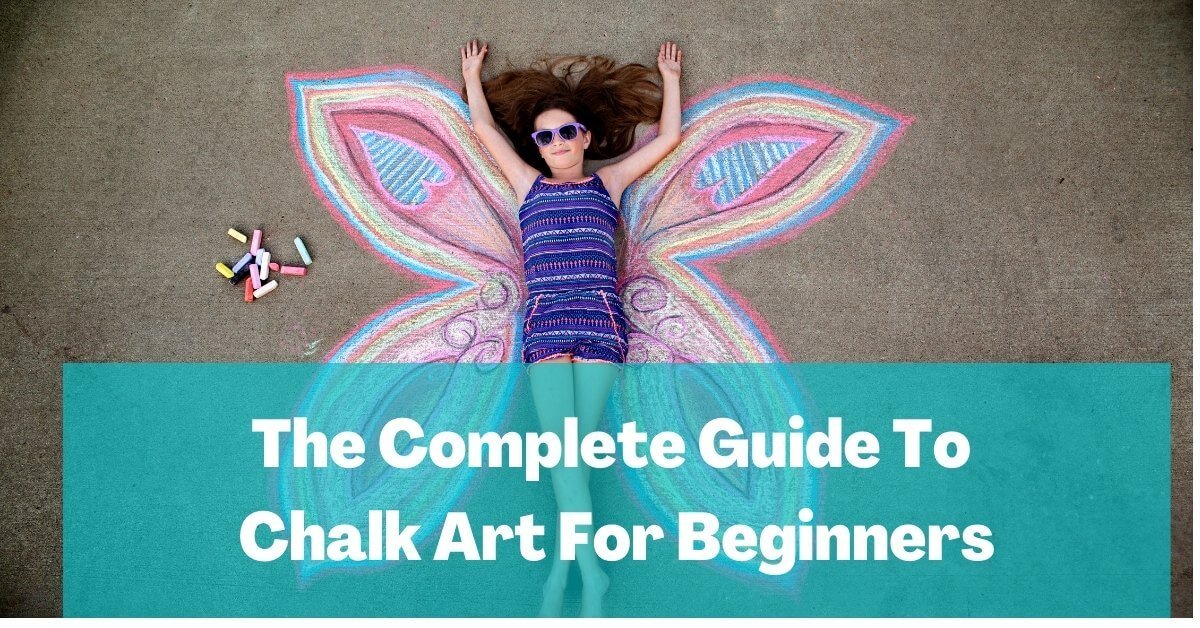Week 4: Construction, Pose, Proportions, Muscle Structure, Hands, Feet, Hair, and Clothes
I hate drawing people. Stick figures are always just so easier, right? Well, that’s just because I didn’t know how to draw people.
Honestly, with a few key pointers on figure drawing… you could go from stick figures to a regular Michaelangelo.
Alright, maybe not… BUT a week of a brief introduction to figure drawing could definitely upgrade your stick figure drawing skills. Check out what’s in store below!
If you are just joining us, this is part 4 of our 4-week series on the beginner’s guide for how to draw.

Figure drawing has not changed over the past centuries. We humans still look the same so the techniques and tips are the same. I found the best resources to actually be some older publications. No need to reinvent the wheel, right?
Andrew Loomis’ “Figure Drawing For All It’s Worth” is a really meaty, technical guide for figure drawing. Like, seriously meaty.
I would say it would be a great resource if you really want an in-depth study into the human figures. It’s available as a free download here.
My absolute favorite guide to figure drawing is this 100-something-page book– “Drawing the Head & Figure” by Jack Hamm.
Seriously, don’t judge this book by its cover! Hamm’s book was published in the 80s which is very evident as soon as you see the dated hairstyles. Just don’t mind the hair tips in this one.
Besides that though, this book is refreshingly straightforward and a highly recommended book for beginners as it mainly consists of illustrations.
Hamm covers figure and head construction, basic lines of the figure, head patterns, angles and comparison, movements, proportions, and simplified figures.
He also covers facial features, torso, neck and shoulders, arms, hands, legs and feet.
DAY 1: DRAWING CONSTRUCTION & POSE
This specific lesson will help you build a strong foundation for pose and construction for your figures… and it actually starts with improving your stick figures!
It also involves some super basic anatomy. No need for us to recall anything scientific from your high school anatomy class, I promise.
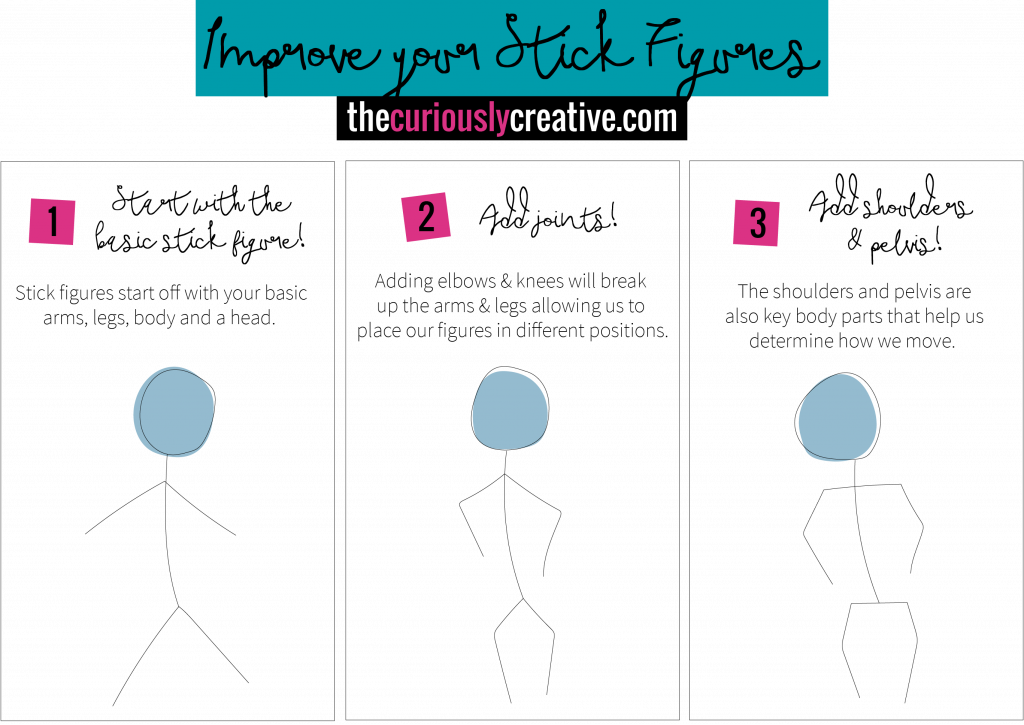
STEP ONE: So we start with the stick figure. Which pretty much just has 4 main parts to it, right? The head, the body, the arms and the legs.
STEP TWO: With the stick figure, we can make a few modifications to help put our figures into different poses. We can break up the arms and legs by adding elbows and knees.
STEP THREE: We can even take it a few steps further and add 2 things that are also important to the way we move…the shoulders and pelvis.
DrawStuffRealEasy’s video demonstrates this concept well. On Air Video also has a great demonstration of construction and pose using a photo of a model.
Exercise
Now that we got that done, we can practice posing our figures. Try drawing your stick figure in a variety of poses –running, walking, jumping jack, throwing a football, sitting down, etc.
If you are having trouble with these and they just don’t look right to you, look up photos of people doing this action and use those to help guide you as you construct your stick figure.
DAY 2: DRAWING PROPORTIONS
Now that your stick figure can do all sorts of things, we should probably make sure it’s proportional.
There’s an easy way to do that. However, do remember that these just act as a good starting point. Not all people will follow these proportions as everyone is constructed differently.
The secret to a well-proportioned human body is to remember magic numbers as well as the alignment of our joints. A person’s height is typically 7-8x the height of their head.
Many guides on figure proportions use the same method or varying methods. From what I’ve seen, the magic number for males is generally 8 while females are generally 7.
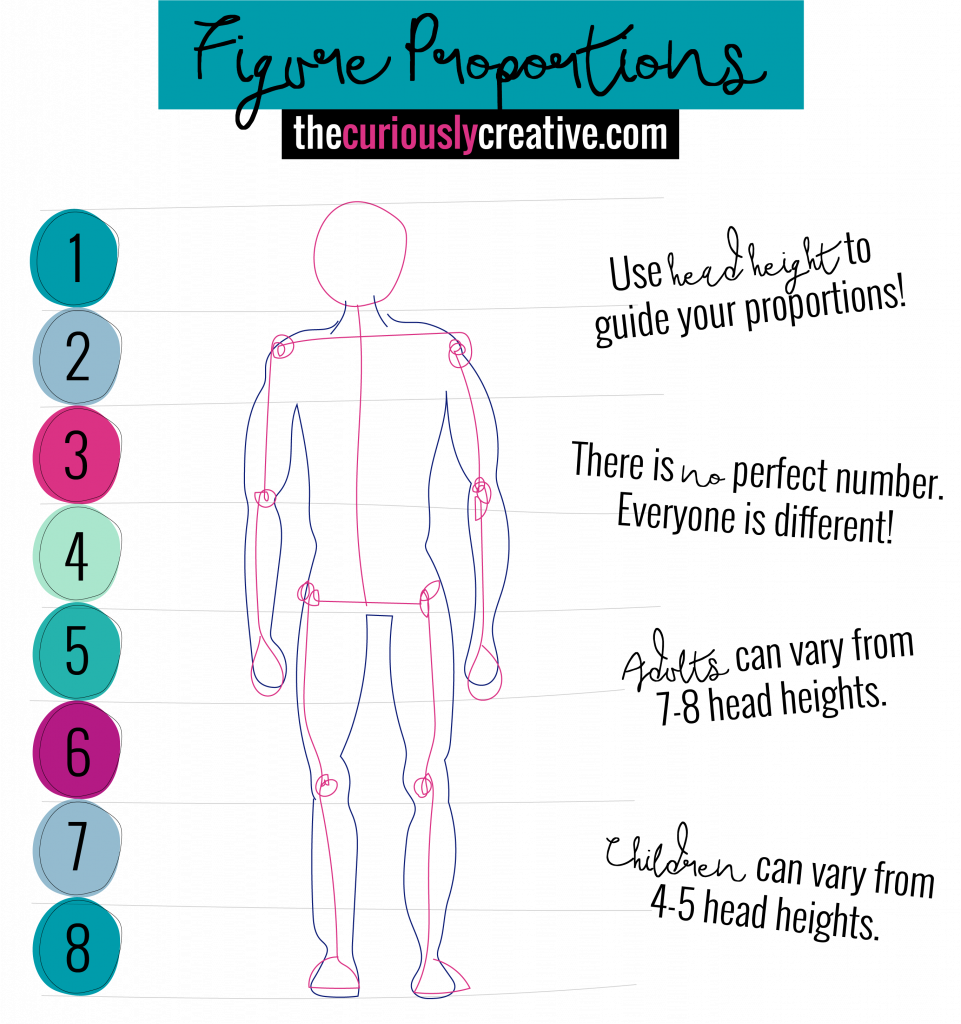
Envato – In my opinion, this is one of the best guides out there. Very thorough but easy to read with clear pictures to help you understand the method.
Mr. Otter Art Studio – This video has a great demonstration that utilizes the same method.
However, the magic number used in this video is 7 (body height is 7 head heights). Oftentimes, females follow the 7-head rule whereas males follow the 8-head rule.
Exercise
Remember that stick figure poses you made earlier? Let’s try applying this new model to them.
Remember your proportions and how each body part relates to each other. Follow the guides I referenced above to create a well-proportioned person.
DAY 3: DRAWING STRUCTURE
Understanding muscle structure is imperative to more realistic drawings of figures, but it actually also helps if you are just drawing cartoon figures.
Even in simplified cartoon figures, a strong knowledge foundation of muscle structures will help you convey certain poses and action of these characters.
Just think of the saying, “you must master the rules before you can break them.” Or something like that.
There really isn’t a quick and dirty guide I can give you on drawing muscles because there are literally SO many of them, but here are a few great resources you can spend day 3 on.
Envato: This online guide briefly goes over the muscles and body fat. It was definitely a trip down memory lane for me with flashbacks to Anatomy 101. It is a wonderful guide.
Stick to Figure: This 2nd video of a 3 part series teaches you how to move from stick figure to human figure by using simple three-dimensional shapes.
The third part of this series helps you understand the body’s contouring.
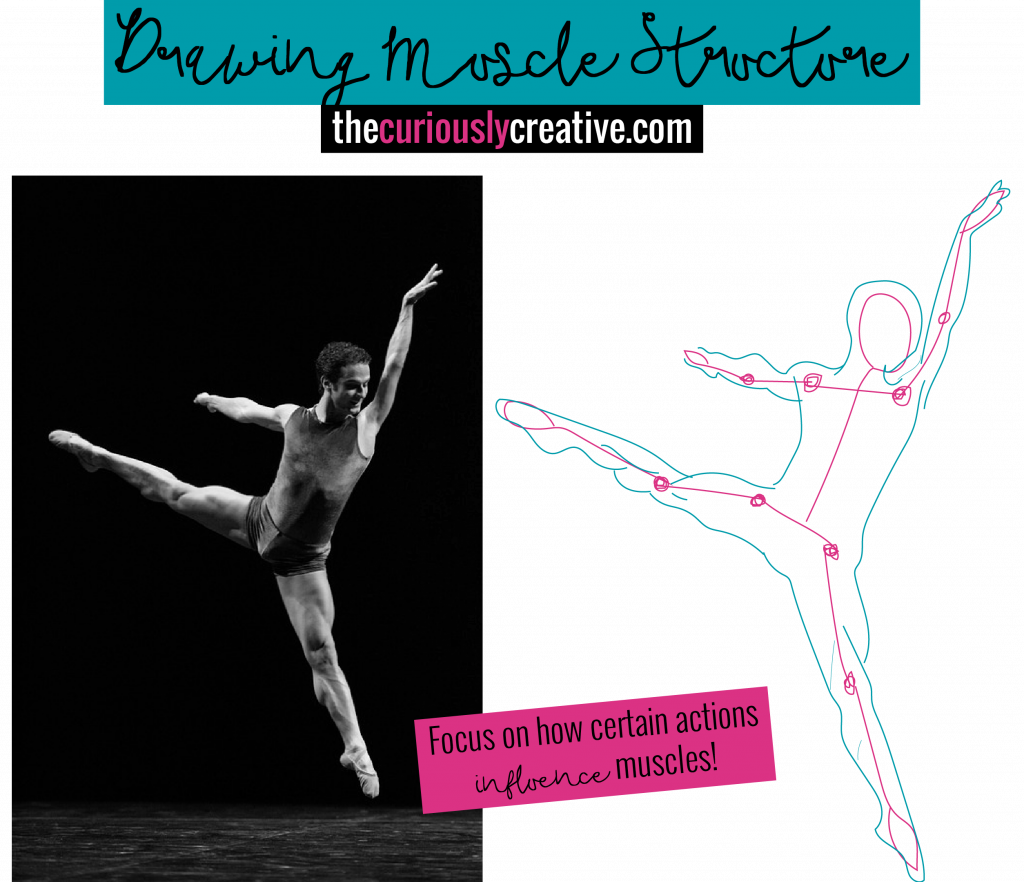
Exercise
Select a few poses of people in action –rock climbing, dancing, shooting a basketball.
Focus on the muscles that are used during these actions and focus on the lines that the muscle creates on the body.
Practice drawing a few people using three-dimensional shapes to first help guide you to form the body.
DAY 4: DRAWING HANDS & FEET
Hands
When I was younger, I drew people who always had their hands tucked into their front pockets. Actually, I probably still do that now. I hate drawings hands.
Hiding the hands is a huge disservice to your drawing. These can be just as expressive as a person’s face. Drawing good hands takes practice and again, a good grip on human anatomy.
Just like your stick figure (from Day 1), hands are more than just five straight lines for fingers. Your hands are composed of 27 bones, 14 of those are in your fingers. The small bones and joints of your hand are important to focus on if you want a good depiction of the hands for your drawing.
Many resources out there just give you a step-by-step on how to draw hands in a specific pose. I think the best guides are those who teach you the basic principles of drawing hands so that you can draw them in any pose.
Envato: I love this guide. It starts at the basic anatomy of construction of the hand and how you can utilize your knowledge of it to draw great hands. Highly recommended!
Art of Wei: This is another great video from this Youtuber. He also focuses on hand construction.
Draw with Jazza: This video is a quick and simple guide to drawing hands. He also has a longer, more detailed video if you want a slower and more comprehensive video.
Exercise
Pick 5 different hand positions and draw them. You can use your non-drawing hand as a guide or you can search images that depict the hand position you want to draw.
Pick a variety of hand positions, not just similar ones. Try a flat hand to start and work your way up to more difficult positions.
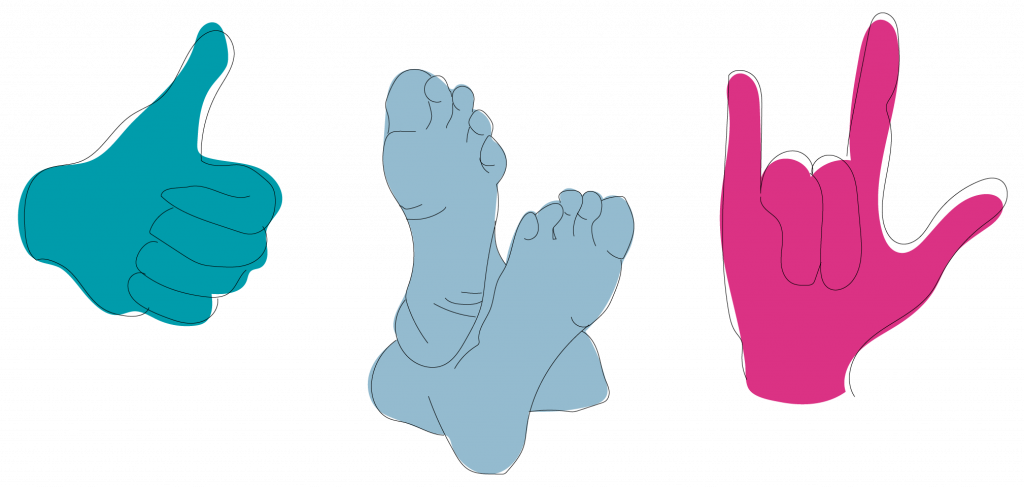
Feet
To me, the feet are even worse than hands…but thankfully, I could always hide them in a nice shoe.
Even if you only draw shoes on your figures, it’s actually really important to get a good grasp on drawing feet too.
It will allow you to draw the feet/shoes in a realistic position in relation to the legs and the body.
Envato: If Envato had a great guide for drawing hands, then it makes sense that they also have a great one for feet. Again, they start with the basic construction of the foot and go from there.
Draw with Jazza: Just like his video for drawing hands, Jazza also provides a quick and simple guide to drawing feet.
Exercise
Draw the foot in different positions – a front-facing view, side view, back view, top view and bottom view.
DAY 5: DRAWING THE FACE
Ahh yes, the face. Not only are proportions important to making sure the face looks right, but learning the details of each component of the face can be quite a challenge.
Eyebrows, eyes, noses, mouths, and we’ll even throw ears in there. With some quick tips, you can easily level up the drawing of your faces but of course, I have also provided some resources I have found to be extremely handy.
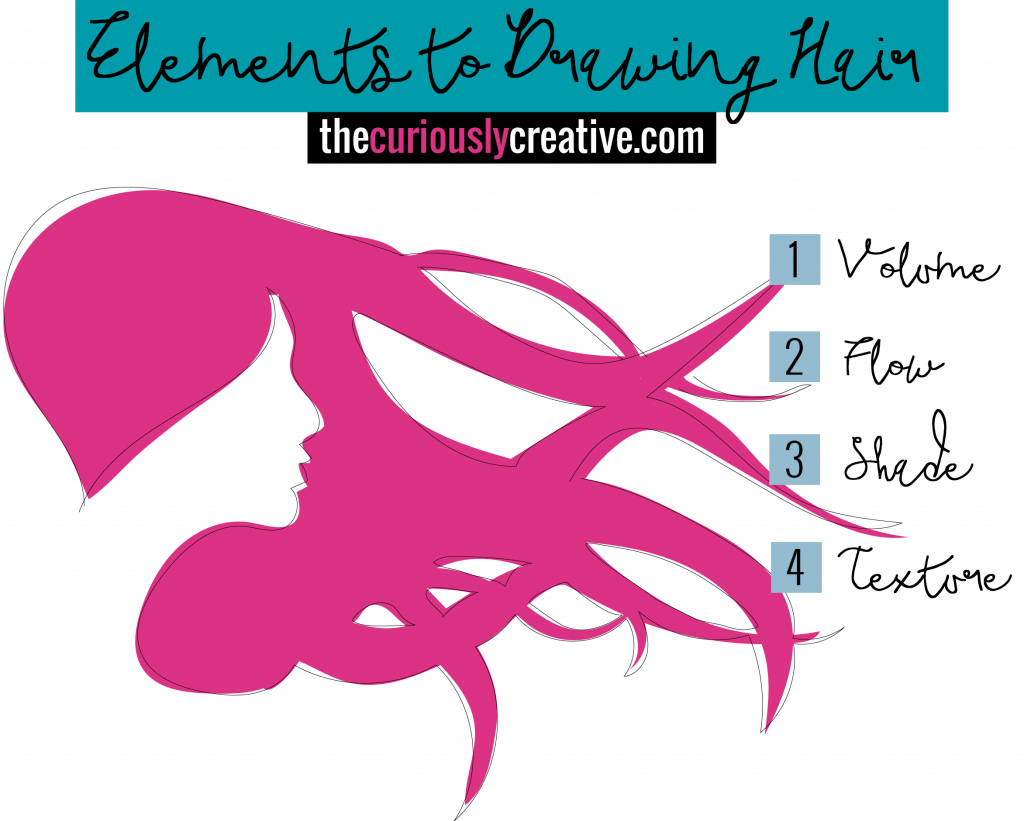
Envato: Envato’s human anatomy drawing series is amazing. The part on drawing the face is one of the best ones in my opinion.
It starts with proportions and follows with great tips for the eyes, eyebrows, nose, mouth, and ears as well.
I recommend this as the only online guide you need to reference to but I’ve provided some videos for those who prefer those.
Envato also has an advanced guide for facial features that I also highly recommend.
Proportions
87tors: This quick video teaches you how to draw a face utilizing basic proportions. Remember though, proportions may be a good starting but real people will not always follow these rules.
Eyes
Jescia Hopper: A 10-minute video that looks at the shapes and anatomy needed for drawing realistic eyes.
Draw with Jazza: A great video if you aren’t looking to draw ultrarealistic eyes. It is geared towards drawing eyes for comic and cartoon characters, but still has very informative tips for eyes in general.
Noses
Draw with Jazza: I really like this video from Jazza because he goes over different drawing styles for noses exploring both a cartoon approach as well as a realistic one.
Lips & Mouth
Draw with Jazza: Again, Jazza has some great thorough how-to videos for facial features. This one is just as good as the others.
Ears
Proko: Proko’s video goes over more of the anatomy and structure of the ear so that have a better understanding of its construction before drawing.
Draw with Jazza: This is a shorter one from Jazza that teaches you how to quickly draw an ear.
Exercise
Practice drawing faces in the correct proportions. Once you are comfortable with this, you can go outside the box a bit and alter some of the proportions to create more unique faces.
DAY 6: DRAWING HAIR
Honestly, hair is just important as any part of the body. It can sometimes tell you a lot about a person.
The four main things to focus on while drawing hair include volume, flow, values (shades), and texture.
The depth of the detail you give to these elements will depend on whether you are trying to achieve a more realistic drawing or a cartoon portrayal of a character.
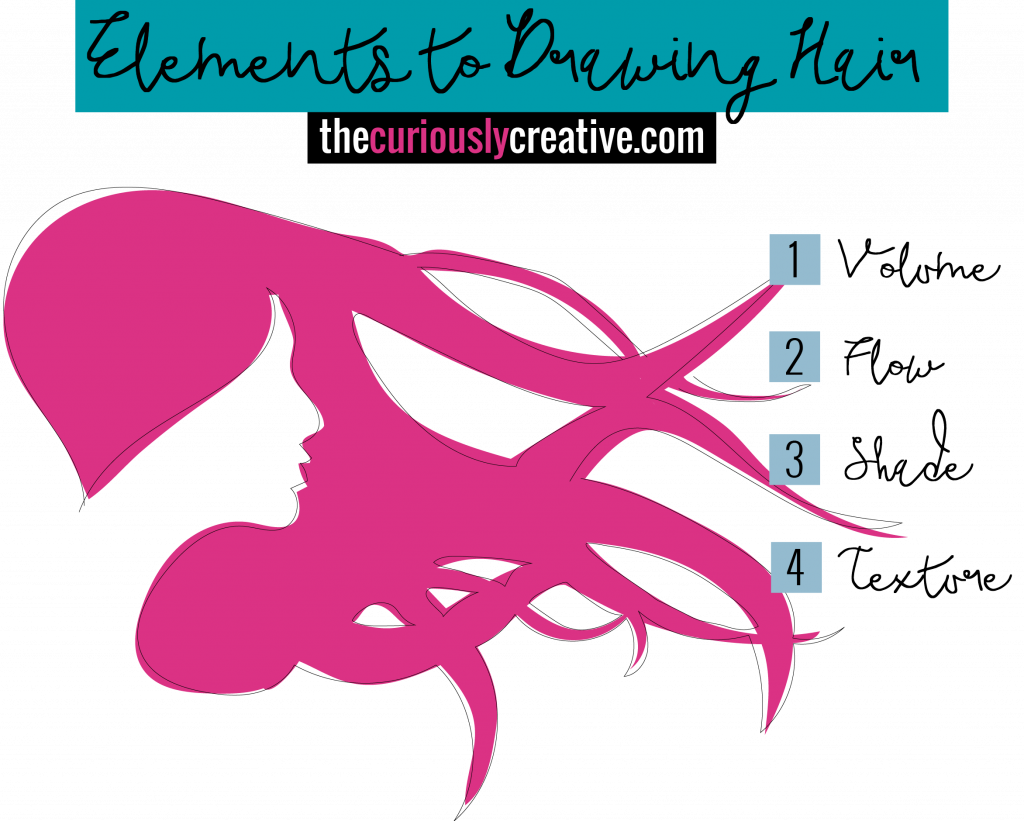
Easy Things to Draw: This video has a few helpful tips on how to draw hair that can really improve your skills.
Draw with Jazza: I just love these videos from Jazza. His video on how to draw hair does not fall short.
Exercise
Draw 10 ovals to represent a person’s head. On 5 of these, draw 5 hairstyles for men using the tips learned from the resources.
On the remaining 5, create 5 different female hairstyles. Try drawing your own hairstyle for one of them as well!
DAY 7: DRAWING CLOTHES
Drawing clothes can probably be whole monthly immersion in itself (ahem, fashion illustrations). I
t requires understanding the folds in clothes as well as how to draw the textures of varying fabrics.
Clothes are a whole ‘nother ball game because you really need to understand the fabric’s weight and material to be able to draw them appropriately.
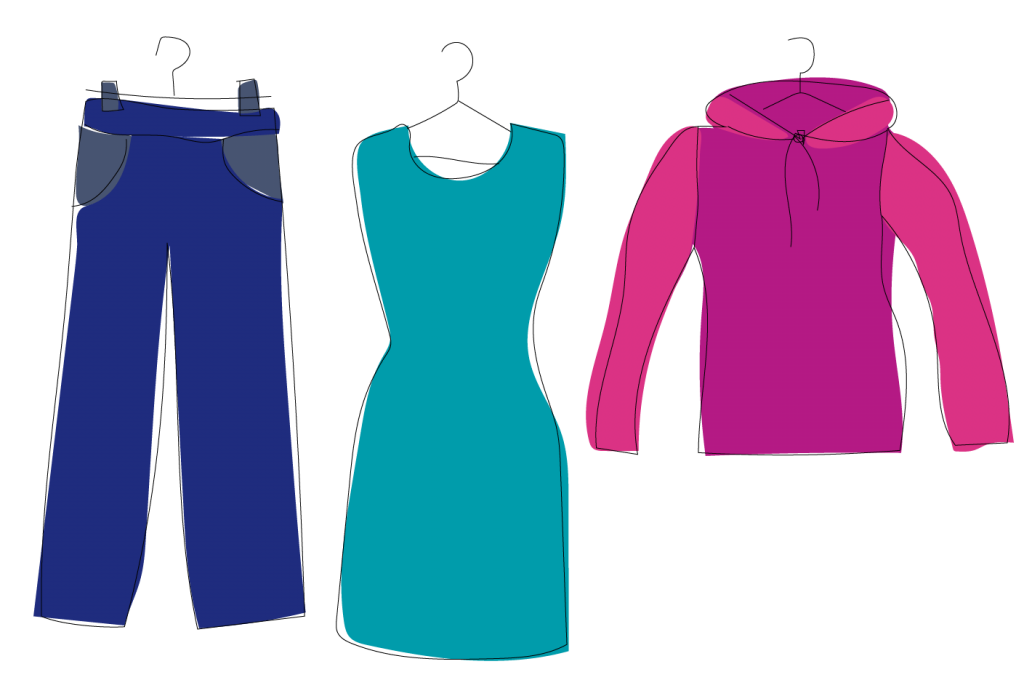
Textures
We covered textures in week 2 but we really focused on surfaces and anything non-fabric-related.
When creating the texture of clothes, you’ll need to have a good understanding of the material and how the light hits the fabric.
Silk is made of a thin thread creating a smooth, light fabric that is very reflective under lighting. Wool, on the other hand, is made from a heavier material and can appear rough when examined closely.
Paper Wing Comics: This video gives a few great tips to use when drawing different types of fabrics.
Folds
There are different types of folds that can exist in fabrics. As long as you know how the fabric folds, you can use the right method to recreate it in your drawing.
Clothes will generally require more than 1 of these types of folds to look realistic.
Thinner fabrics will fold easier, creating numerous more folds than thick fabric. Soft fabrics will fold rounder so you should draw softer curves instead of harsh lines for your folds.
Digital Tutors: An awesome online guide for the 6 different types of folds you should know when drawing clothing.
Draw with Jazza: Jazza demonstrates how to draw clothing by concentrating on how the fabric folds and how the clothes hang on a person’s body. Great video covering both thin and thick material as a loose and tight fit.
Exercise
On your drawing for day 2 of this week (proportions), draw some clothes on your figure. You can select the clothes you are wearing so that you have a reference to go off of right where you are sitting!
Well, my curiously creative friends, that wraps it up for the first month of this hobby.
However, drawing opens up many doors to different hobbies within this skill set. Because of this, we’ll be dedicating one more additional month to drawing.
Next we’ll be exploring different types of drawing rather than just learning the basics.
Final Words
Well, that brings us to the end of this 4-week journey of learning how to draw!
I hope you’ve learned some great basics that will help you build a strong foundation if you decide to pursue drawing further.
If not and you didn’t think drawing was your thing, no worries! We explore a different arts & craft hobby each month here so you can find a hobby you like.
OTHER GUIDES:
The Complete Beginner’s Guide to Drawing
The Quick Beginner’s Guide to Drawing Supplies
Week 1: The Beginner’s Guide to Drawing Basics: Part 1
Week 2: The Beginner’s Guide to Drawing Basics: Part 2
Week 3: The Beginner’s Guide to Perspective Drawing
